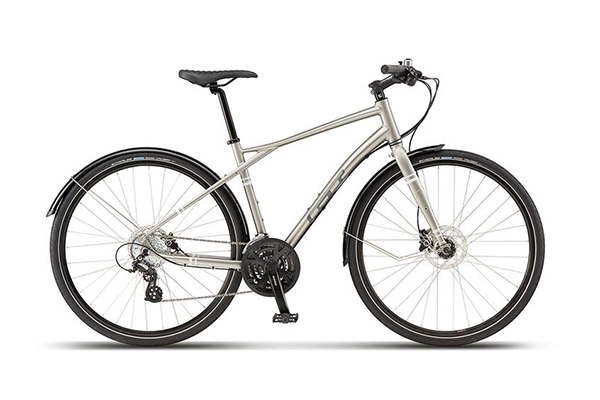Bicycling is a popular mode of transportation and a beloved recreational activity enjoyed by millions worldwide. As we pedal our way through the streets or embark on thrilling off-road adventures, safety becomes a crucial consideration. One aspect of bicycle safety that often sparks debate is the use of helmets. In this blog post, we will delve into the question of whether it is mandatory to wear a helmet for bicycles, exploring different perspectives and shedding light on the importance of bicycle helmet safety.
Understanding Bicycle Helmet Safety:
2.1 Different types of bicycle helmets:
When it comes to bicycle helmets, there are various designs and styles available in the market. From traditional hard-shell helmets to sleek aerodynamic options, each helmet has its unique features and benefits. It’s essential to choose a helmet that fits properly and meets the necessary safety standards.
2.2 How helmets protect against head injuries:
The primary purpose of a bicycle helmet is to reduce the risk of head injuries in case of an accident. Helmets are designed to absorb and dissipate the impact forces that would otherwise be transmitted to the skull and brain. By providing a protective barrier, helmets can mitigate the severity of head trauma, potentially saving lives.
Helmet Laws and Regulations:
3.1 Overview of helmet laws around the world:
Helmet laws vary significantly across different countries. Some nations have strict mandatory helmet laws, requiring all cyclists to wear helmets at all times. Others have more relaxed regulations or no specific laws regarding helmet usage. It’s important to familiarize oneself with the helmet laws in the region where you plan to ride.
3.2 Helmet laws by region:
To delve deeper into the topic, let’s explore the helmet laws in specific regions or countries. For instance, countries like Australia and New Zealand have implemented nationwide mandatory helmet laws, enforcing fines for non-compliance. On the other hand, countries like the Netherlands have a more lenient approach, with no helmet laws in place.
3.3 Arguments for and against mandatory helmet laws:
The debate surrounding mandatory helmet laws is multifaceted. Advocates for mandatory helmet laws argue that they significantly reduce head injuries and save lives. They believe that making helmet use compulsory ensures consistent protection for all cyclists. Opponents, however, raise concerns about personal freedom and individual choice. They argue that helmet laws may discourage cycling and create a false sense of security.
Importance of Wearing a Helmet:
4.1 Statistics on bicycle accidents and head injuries:
The statistics surrounding bicycle accidents and head injuries emphasize the importance of wearing a helmet. Studies consistently show that head injuries account for a significant portion of bicycle-related fatalities and severe injuries. Helmets can significantly reduce the risk of head trauma and its long-term consequences.
4.2 Benefits of wearing a helmet:
Aside from the obvious protection they offer, helmets provide psychological reassurance and peace of mind. When cyclists wear helmets, they feel more confident and secure, allowing them to fully enjoy their rides. The knowledge that they have taken an important safety precaution helps riders focus on the road ahead.
Factors to Consider when Deciding to Wear a Helmet:
5.1 Individual choice and personal responsibility:
While there may be differing opinions on helmet laws, the decision to wear a helmet ultimately rests with the individual cyclist. Personal responsibility plays a significant role in ensuring one’s safety. Each cyclist must assess their own comfort level, risk tolerance, and the prevailing riding conditions.
5.2 Risk factors and riding conditions:
Various risk factors, such as traffic congestion, speed, and road conditions, can influence the decision to wear a helmet. Cyclists who frequently ride in high-traffic areas or on challenging terrains may opt for increased protection. Additionally, inclement weather conditions or riding at night might warrant extra safety precautions, including helmet usage.
5.3 Cultural and social norms:
Cultural and social norms also play a role in helmet usage. In some regions, wearing a helmet while cycling is ingrained in the local culture and widely accepted as the norm. In contrast, in other areas, helmet usage may be less prevalent due to cultural practices or societal attitudes. It’s important to consider the influence of these norms and make an informed decision while prioritizing personal safety.
Recommendations for Helmet Usage:
6.1 Benefits of wearing a helmet:
Considering the potential risks involved in cycling, it is strongly recommended to wear a helmet. The benefits of wearing a helmet far outweigh the drawbacks. By reducing the risk of head injuries, helmets can provide valuable protection and improve overall safety on the road.
6.2 Safety precautions and best practices:
To maximize the effectiveness of helmet usage, it’s crucial to follow safety precautions and best practices. Firstly, ensure that your helmet fits properly and securely on your head, with the chin strap fastened snugly. Regularly inspect your helmet for any signs of wear and tear, and replace it if necessary. Additionally, consider investing in helmets with added features like reflective elements for enhanced visibility.
Related:
HJC RPHA 11 vs RPHA 70: Choosing the Perfect Motorcycle Helmet
FAQs:
Are helmets really effective in preventing head injuries?
Yes, helmets have been proven to be effective in reducing the risk of head injuries. Studies consistently show that wearing a helmet can significantly decrease the severity of head trauma in the event of a bicycle accident.
Do helmet laws actually make a difference?
Helmet laws can have a positive impact on increasing helmet usage rates and reducing head injuries. Countries with mandatory helmet laws tend to have higher compliance rates, leading to a lower incidence of head injuries in bicycle-related accidents.
How do I choose the right helmet for me?
When choosing a helmet, look for one that fits properly, snugly, and comfortably on your head. Ensure that it meets the required safety standards and provides adequate coverage and protection. It’s recommended to try on different helmet styles and brands to find the one that suits you best.
Are there any situations where wearing a helmet may not be necessary?
While it is generally recommended to wear a helmet whenever cycling, there may be specific situations where the risk of head injuries is minimal. For example, cycling on dedicated bike paths or in low-traffic areas with slow speeds may present lower risks. However, it’s important to assess the conditions and make an informed decision based on your comfort level and safety priorities.
Can wearing a helmet give cyclists a false sense of security?
There is a concern that wearing a helmet may lead to risk compensation, where cyclists take more risks or engage in reckless behavior due to the perceived protection provided by the helmet. While this behavior can occur, studies have shown that the overall safety benefits of wearing a helmet still outweigh any potential negative effects.
Are there any alternatives to helmets for head protection?
While helmets are the most common and widely recommended form of head protection for cyclists, there are alternative options available, such as soft-shell helmets or padded headbands. However, it’s important to note that these alternatives may not provide the same level of protection as traditional helmets.
Are there any age restrictions for helmet usage?
Many regions have specific helmet laws that outline age restrictions for wearing helmets while cycling. It is essential to familiarize yourself with the local regulations to ensure compliance and the safety of riders of all ages.
Conclusion:
The question of whether it is mandatory to wear a helmet for bicycles is a complex and contentious issue. While helmet laws vary worldwide, the importance of bicycle helmet safety cannot be overstated. Statistics consistently demonstrate the role helmets play in reducing the risk of head injuries and saving lives.
Ultimately, the decision to wear a helmet rests with individual cyclists, taking into account personal choice, risk factors, riding conditions, cultural norms, and social attitudes. Regardless of legal requirements, prioritizing safety by wearing a helmet is a responsible and prudent choice that can enhance one’s overall cycling experience.
As cyclists, let us embrace a safety-first mindset and encourage others to consider the significant benefits that helmets provide. By making informed decisions and adopting best practices, we can contribute to creating a culture of bicycle safety, ensuring enjoyable rides while minimizing the risk of head injuries. Remember, every ride is an opportunity to protect ourselves and promote a safer cycling environment.




